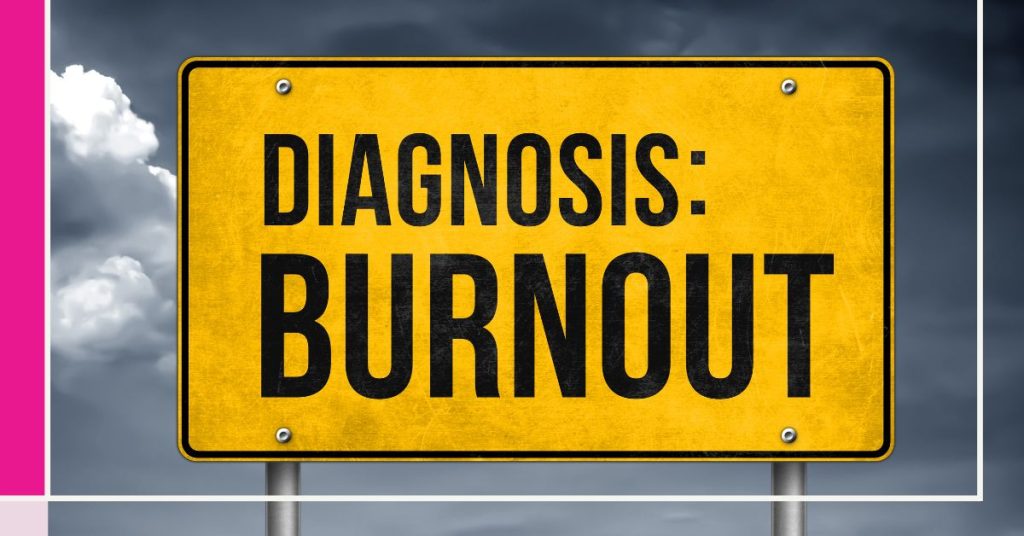Diabetes Burnout: Reclaim Your Energy with 7 Self-Care Tips
Diabetes burnout is a state of mental and physical exhaustion caused by the relentless demands of diabetes management. It can lead to emotional exhaustion, decreased motivation, and feelings of frustration or helplessness, especially prevalent among those in midlife who are balancing numerous responsibilities.
Living with diabetes requires constant vigilance—monitoring blood sugar levels, adhering to dietary restrictions, and maintaining regular exercise routines. Over time, this relentless cycle can wear down even the most resilient individuals. For those in their 40s and beyond, the challenge of balancing diabetes management with other life responsibilities can exacerbate feelings of burnout, leading to a decline in overall health and well-being.
At Midlife Runners Paradise, we understand the complexities of diabetes burnout and the unique challenges faced by midlife individuals. Our approach is holistic, incorporating the 6 Week Walking Challenge, Gentle Couch to 5k training, and run/walk strategies to help you reclaim your energy. Our specialized running workshops and online membership platform (with free trial) are designed to foster resilience, health, and joy, proving that it’s never too late to redefine your health and happiness. Through our gentle running framework and supportive community, we aim to provide actionable self-care tips that empower you to manage diabetes burnout effectively.
Understanding Diabetes Burnout
Diabetes burnout is like hitting a wall after running a marathon. It’s a state of mental and physical exhaustion from constantly managing diabetes. It’s more than just feeling tired; it’s a sense of being overwhelmed, frustrated, and maybe even a little defeated.
Signs of diabetes burnout can include:
- Feeling emotionally drained and detached from your diabetes care
- Questioning if your efforts are even making a difference
- Skipping doctor’s appointments or neglecting your blood sugar checks
- Losing interest in activities you once enjoyed
These feelings are common among those managing diabetes. The daily demands of tracking blood sugar, watching your diet, taking medications, and fitting in exercise can be a heavy load to carry. But the good news is, diabetes burnout is not a dead end. Recognizing it is the first step to reclaiming your energy and finding joy in your journey again.
Finding Your Stride: The Role of Physical Activity in Managing Diabetes Burnout
When diabetes burnout starts to weigh you down, lacing up your running shoes might be the last thing on your mind. But here’s the surprising truth: moving your body can be a powerful antidote to burnout.
How Exercise Helps
Regular physical activity, especially running, does more than just burn calories. It’s a natural mood booster that can:
- Reduce stress: Running helps your body release endorphins, those feel-good chemicals that act like natural painkillers and mood elevators.
- Improve sleep: Better sleep means more energy and a clearer head to tackle daily challenges.
- Boost confidence: Achieving your running goals, no matter how small, can remind you of your strength and resilience.
Build Strength with the 80/20 Rule
While running is fantastic for your heart and mind, don’t forget the power of strength training! And no, we’re not talking about becoming a bodybuilder. We’re talking about incorporating simple strength exercises into your routine using the 80/20 rule.
What is 80/20 Strength Training?
It’s a simple concept: 80% of your training time is spent on cardio (like running), and 20% is dedicated to strength training. This balanced approach helps:
- Build Muscle: Muscle burns more calories at rest than fat, helping you manage your weight and blood sugar levels more effectively.
- Strengthen Bones: Stronger bones mean a lower risk of fractures and injuries as you age.
- Improve Balance and Coordination: This can be especially helpful for those with diabetes-related nerve damage (neuropathy).
Easy Strength Exercises for Everyday Life
No gym? No problem! Here are a few simple exercises you can do at home with minimal equipment:
- Squats: Stand with feet shoulder-width apart, lower your body as if sitting in a chair, then stand back up.
- Lunges: Step forward with one leg, bend both knees until your back knee almost touches the floor, then return to standing.
- Push-Ups: Start on all fours, lower your body until your chest nearly touches the floor, then push back up.
- Plank: Hold your body in a straight line from head to heels, resting on your forearms and toes.
Remember, consistency is key! Even a few minutes of strength training a few times a week can make a big difference.
Bonus Tip: If you’re new to strength training, consider working with a certified trainer to ensure you’re using proper form and avoiding injury.
Prioritize Heart-Based Training for a Healthy Heart and Mind
Think of heart-based training as your long, easy run – it’s not about pushing to your limit, but about sustaining a comfortable effort for a longer period. This type of exercise is like giving your heart a gentle hug. It involves maintaining your heart rate within a specific zone (usually 50-70% of your maximum heart rate) for an extended period.
Why Heart-Based Training is Essential for Diabetes
This kind of training isn’t just about burning calories; it’s about nurturing your cardiovascular health, which is crucial for managing diabetes. Consistent heart-based training can:
- Improve Heart Function: It strengthens your heart muscle and helps it pump blood more efficiently.
- Lower Blood Pressure: High blood pressure is a common issue for people with diabetes, and heart-based training is a natural way to bring it down.
- Boost Mood: Like any exercise, heart-based training releases endorphins, those feel-good chemicals that can help alleviate stress and anxiety.
How to Incorporate Heart-Based Training
- Monitor Your Heart Rate: Use a heart rate monitor (many fitness trackers and smartwatches have them) to ensure you’re staying within your target zone.
- Run at a Conversational Pace: A good rule of thumb is that you should be able to chat comfortably while you’re running. If you’re gasping for air, slow down a bit.
- Prioritize Consistency: Aim for at least 30 minutes of heart-based training most days of the week. You can break it up into shorter sessions if that’s easier to fit into your schedule.
Remember, listening to your body is key. If you’re feeling tired or pushing too hard, it’s okay to slow down or take a break. Heart-based training is all about finding a sustainable pace that supports your overall health and well-being.
Fuel Your Body with Healthy Nutritional Habits
Just like a car needs the right fuel to run smoothly, your body needs the right nutrients to manage diabetes effectively. Making healthy food choices can be a game-changer when it comes to combating diabetes burnout.
Building a Balanced Plate
Think of your plate as a pie chart:
- Half your plate: Fill it with non-starchy vegetables like broccoli, spinach, or peppers. These are low in calories and carbohydrates, which helps keep your blood sugar steady.
- A quarter of your plate: Choose lean protein sources like chicken, fish, beans, or tofu. Protein helps you feel full and satisfied, preventing overeating.
- The remaining quarter: Opt for complex carbohydrates like brown rice, quinoa, or whole-wheat bread. These provide sustained energy and help prevent blood sugar spikes.
Smart Swaps for Stable Blood Sugar
- Ditch the sugary drinks: Swap soda, juice, and sweetened tea for water, unsweetened tea, or sparkling water with a splash of fruit.
- Choose whole grains: Instead of white bread, pasta, and rice, go for whole-wheat versions.
- Snack smart: Reach for fruits, vegetables with hummus, nuts, or Greek yogurt instead of processed snacks.
Additional Tips for Nutritional Success
- Plan your meals: This helps you make healthier choices and avoid impulsive decisions.
- Read food labels: Pay attention to serving sizes and sugar content.
- Seek guidance from a registered dietitian: They can help you create a personalized meal plan that meets your specific needs.
Remember, healthy eating doesn’t have to be boring or restrictive. There are countless delicious and nutritious options out there. By prioritizing whole foods and making smart swaps, you can fuel your body for optimal health and energy while managing diabetes.
Fortify Your Mind: Build Mental Resilience
Diabetes management is a marathon, not a sprint, and like any endurance event, mental resilience is key. When burnout threatens to derail your efforts, a strong mind can be your greatest ally.
Stress Management Strategies
Stress can wreak havoc on your blood sugar levels and exacerbate burnout. Here are some strategies to keep stress in check:
- Mindfulness and Meditation: Take a few minutes each day to focus on your breath, observe your thoughts without judgment, and simply be present in the moment.
- Relaxation Techniques: Explore yoga, tai chi, or deep breathing exercises to calm your mind and body.
- Journaling: Writing down your thoughts and feelings can help you process emotions and gain clarity.
Building Mental Strength
Think of mental resilience like a muscle that needs to be trained. Here are some exercises to strengthen it:
- Positive Self-Talk: Replace negative thoughts with encouraging ones. Instead of “I can’t do this,” try “I can handle this challenge.”
- Set Realistic Goals: Break down overwhelming tasks into smaller, manageable steps. Celebrate your successes, no matter how small.
- Seek Support: Talk to friends, family, or a therapist about how you’re feeling. Connecting with others who understand can be incredibly helpful.
Don’t Forget to Rest
Rest is not a luxury; it’s essential for mental and physical well-being. Make sure you’re getting enough sleep, taking breaks throughout the day, and scheduling downtime to recharge.
Remember, building mental resilience is an ongoing process. Be patient with yourself, celebrate your progress, and don’t hesitate to seek help if you need it. A strong mind can help you navigate the ups and downs of diabetes management with grace and strength.
Nurture Your Social Connections
Managing diabetes can sometimes feel like a solo journey, but you’re not alone. Social connections can be a powerful antidote to burnout, providing support, understanding, and motivation.
Why Social Support Matters
Research shows that people with strong social networks are more likely to manage their diabetes effectively and have better overall health outcomes. Social support can:
- Provide Emotional Comfort: Talking to someone who understands your challenges can help you feel less isolated and more understood.
- Offer Practical Advice: Friends, family, or support groups can share tips and strategies that have worked for them.
- Boost Accountability: Having someone to check in with can help you stay on track with your health goals.
How to Strengthen Social Connections
- Join a Support Group: Look for diabetes support groups in your community or online. Connecting with others who are going through similar experiences can be incredibly reassuring.
- Reach Out to Friends and Family: Don’t hesitate to share your feelings and challenges with your loved ones. They care about you and want to help.
- Get Involved in Community Activities: Join clubs, classes, or volunteer opportunities that interest you. This can help you meet new people and expand your social circle.
Building a Supportive Network at Midlife Runners Paradise
At Midlife Runners Paradise, we’re not just about running; we’re about building a community. Our workshops and online platforms provide opportunities to connect with others who share your journey. Whether it’s through our 6 Week Walking Challenge, Gentle Couch to 5k program, or specialized running workshops, you’ll find a supportive and understanding community ready to cheer you on.
Remember, nurturing your social connections takes time and effort, but the rewards are well worth it. A strong support network can provide the encouragement and motivation you need to manage diabetes and live a fulfilling, balanced life.
Cultivate a Positive Attitude
Your mindset plays a crucial role in how you manage diabetes. Cultivating a positive attitude can help you stay motivated, resilient, and empowered in the face of challenges.
The Power of Positivity
A positive attitude can:
- Boost Your Motivation: When you focus on the positive aspects of your journey, you’re more likely to stay motivated and committed to your health goals.
- Reduce Stress: Positive thinking can help lower stress levels, which is beneficial for blood sugar management.
- Enhance Overall Well-Being: A positive mindset contributes to better mental and physical health, making it easier to cope with the demands of diabetes management.
Strategies to Cultivate Positivity
- Practice Gratitude: Take a few minutes each day to reflect on what you’re grateful for. This simple practice can shift your focus from what’s wrong to what’s right in your life.
- Set Realistic Expectations: Understand that managing diabetes is a journey with ups and downs. Be kind to yourself and celebrate your progress, no matter how small.
- Surround Yourself with Positivity: Spend time with people who uplift and inspire you. Avoid negative influences that bring you down.
- Focus on What You Can Control: Instead of worrying about things beyond your control, concentrate on what you can do to manage your diabetes effectively.
Midlife Runners Paradise: A Positive Community
At Midlife Runners Paradise, we believe in the power of positivity. Our community is dedicated to fostering a supportive and encouraging environment where you can thrive. Whether you’re participating in our 6 Week Walking Challenge, Gentle Couch to 5k program, or running workshops, you’ll find a network of positive, like-minded individuals ready to support you every step of the way.
Remember, cultivating a positive attitude is an ongoing process. It takes practice and patience, but the benefits are immense. By focusing on the positive aspects of your journey, you can manage diabetes more effectively and live a happier, healthier life.
In conclusion, diabetes burnout is a common challenge, but it’s not insurmountable. By incorporating these self-care tips into your daily routine, you can reclaim your energy, find joy in your journey, and live a fulfilling life. At Midlife Runners Paradise, we’re here to support you every step of the way. Join our community today and discover the transformative power of gentle running and a supportive network.





